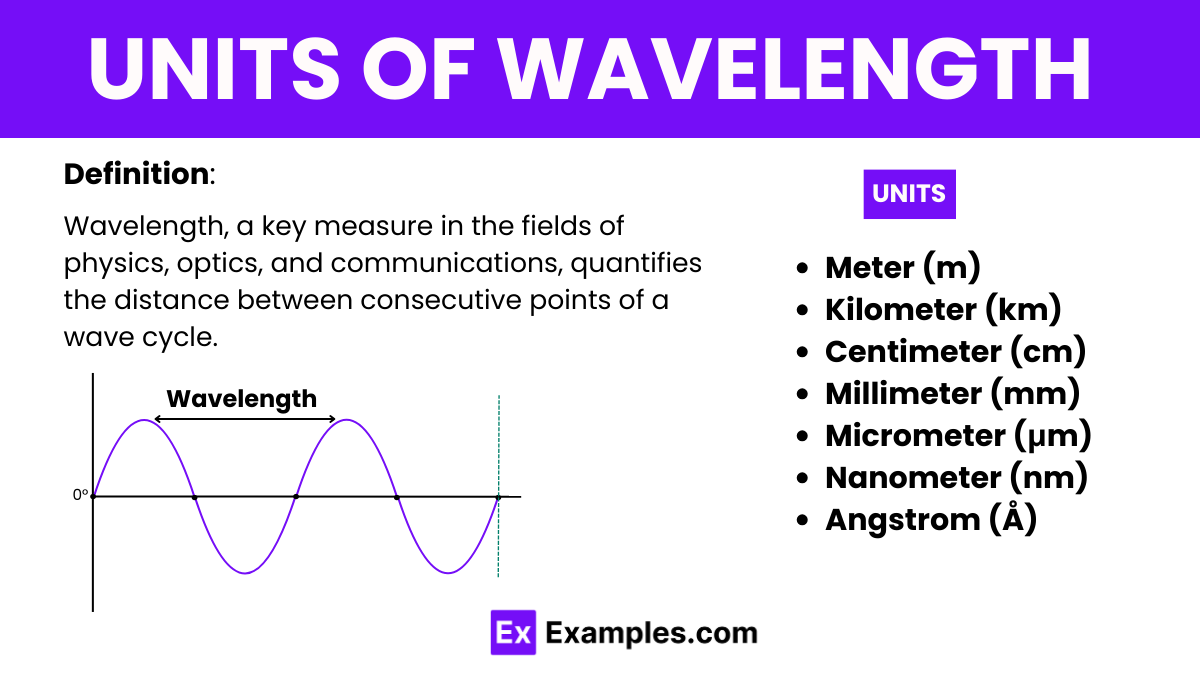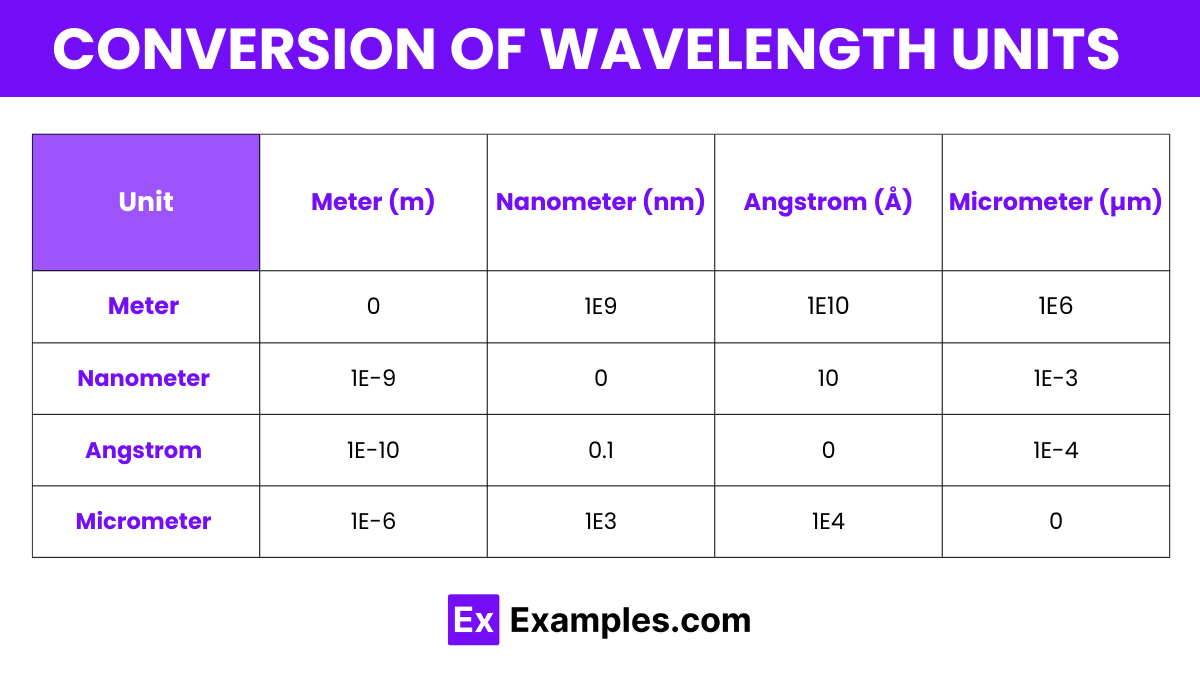What is the unit of wavelength in the SI system?
Meter
Hertz
Newton
Coulomb

Wavelength, the distance between successive peaks or troughs of a wave, is crucial in various scientific fields such as physics, optics, and telecommunications. Understanding the units used to measure wavelength allows for precise communication and calculation in these disciplines.
The meter (m) is the official SI unit for measuring wavelength. This unit is versatile, encompassing wavelengths that span from the very small, such as ultraviolet light, to the comparatively large, like radio waves. The meter’s universal applicability ensures that it is essential in various scientific fields, including physics, chemistry, and astronomy.
In the Centimeter –Gram–Second(CGS) system, the centimeter (cm) is the standard unit for measuring wavelength. This unit is particularly useful for recording wavelengths of electromagnetic waves such as infrared radiation, where precision is crucial.
The formula for wavelength (𝜆) is:
This equation calculates the distance over which the wave’s shape repeats.
Here is the table format for different units of wavelength, organized similar to your example of energy units:
| Unit | Symbol |
|---|---|
| Meter | m |
| Centimeter | cm |
| Nanometer | nm |
| Angstrom | Å |
| Micrometer | µm |
| Millimeter | mm |
Here’s the detailed format for different units of wavelength, similar to the format used for units of energy:
The meter is the SI unit of wavelength used to measure the distance over which a wave’s shape repeats, such as in light or sound waves. It is universally utilized in scientific research, telecommunications, and optics.
Centimeters are often used to describe the wavelengths of microwaves, infrared radiation, and other types of electromagnetic waves that require precision on a smaller scale.
Nanometers measure the wavelengths of light in the visible spectrum and other forms of electromagnetic radiation such as ultraviolet and infrared light, crucial in fields like photonics and materials science.
Angstroms are used specifically in the fields of chemistry and crystallography to measure the scale of atoms and the spacing between elements in a crystal structure.
Micrometers are used to measure wavelengths of infrared radiation and various other types of light that are slightly longer than the visible spectrum.
Millimeters are suitable for measuring radio wavelengths and other longer waves, useful in radar and other wireless communications technologies.

Here is a table format for different units of wavelength, showing conversion factors among common units like meters, nanometers, angstroms, and micrometers:
| Wavelength Unit | Meter (m) | Nanometer (nm) | Angstrom (Å) | Micrometer (µm) |
|---|---|---|---|---|
| Meter (m) | 0 | 1E9 | 1E10 | 1E6 |
| Nanometer (nm) | 1E-9 | 0 | 10 | 1E-3 |
| Angstrom (Å) | 1E-10 | 0.1 | 0 | 1E-4 |
| Micrometer (µm) | 1E-6 | 1E3 | 1E4 | 0 |
The SI unit of wavelength is the meter (m), and the CGS unit of wavelength is also the centimeter (cm), reflecting smaller-scale measurements.
The SI unit of wavelength is the meter (m), and the SI unit of frequency is the hertz (Hz), crucial for characterizing waves accurately.
The symbol for wavelength is λ (lambda), and its SI unit is the meter (m), essential for specifying wave distances in science.
Text prompt
Add Tone
10 Examples of Public speaking
20 Examples of Gas lighting
What is the unit of wavelength in the SI system?
Meter
Hertz
Newton
Coulomb
Which of the following units is commonly used to measure wavelengths of visible light?
Kilometer
Centimeter
Nanometer
Gigameter
How many nanometers are there in one meter?
10
100
1000
1,000,000,000
The wavelength of a radio wave is 3 meters. What is this wavelength in centimeters?
3 cm
30 cm
300 cm
3000 cm
What is the typical unit used to measure the wavelength of X-rays?
Meter
Millimeter
Micrometer
Angstrom
If the wavelength of a sound wave is 0.5 meters, what is its wavelength in millimeters?
0.5 mm
5 mm
50 mm
500 mm
Which unit is larger, a micrometer or a nanometer?
Micrometer
Nanometer
They are the same
It depends on the context
The wavelength of a particular color of light is 700 nm. What is this wavelength in micrometers?
0.07 µm
0.7 µm
7 µm
70 µm
Which of the following units is NOT used to measure wavelength?
Meter
Hertz
Angstrom
Nanometer
What is the wavelength in nanometers of ultraviolet light with a wavelength of 0.2 micrometers?
0.2 nm
2 nm
20 nm
200 nm
Before you leave, take our quick quiz to enhance your learning!

